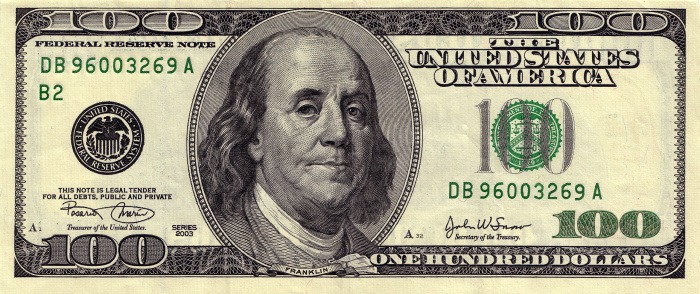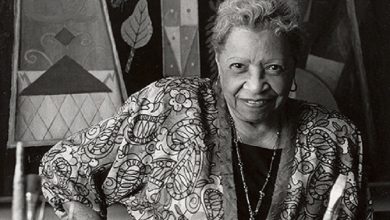Secrets of US banknotes: do they have a Masonic sign, why are they called bucks?

Today, the American dollar is rightfully the most demanded currency in the world market and has value in almost all countries of the globe.
In addition to the truly huge popularity of the dollar, there is also an interesting history of its appearance; there are many legends and myths about these banknotes. The US dollar also has its own secrets.
The history of the origin of the word “dollar”
Green dollars appeared in America after the proclamation of its independence on July 4, 1776 (this date is still celebrated by Americans as Independence Day). Until that moment, thalers were used in the country’s monetary circulation – large silver coins, which in the period from the 16th to the 19th played an important role in the economic and trade relations of almost all of Europe and some Asian countries.
The very word “dollar” comes from “joachimstaler” (coins that were minted in the Czech Republic at that time). Later, in some countries, the long and uncomfortable name was shortened to “thaler”, and in translation, into English, it began to sound like “dollar”.
The first American dollars were also not what people see them at the present time. In those years, they, like thalers, were minted from silver, and paper banknotes appeared only in 1861. The design of the paper dollar has changed and improved several times, but throughout the history of its existence, banknotes have retained a green tint, which in itself has become a certain symbol of the American dollar and made it easily recognizable all over the world.
Bucks: where did this name come from
There are two versions of the origin of the word “bucks”. The first is that it came from the abbreviation “buckskin”, which means “deer skin”. The fact is that many years ago, Americans used deer skins in trade relations, that is, they paid for certain goods or services.
According to another version, during the Civil War, President Abraham Lincoln ordered the issuance of 500 million new banknotes, the back of which was green. Then they were called greenbacks. Hence the name “bucks”. By the way, both versions have no evidence, so they can only be called assumptions.
The meaning of the Masonic triangle on the banknote
The Masonic triangle, which is an unfinished pyramid crowned with a burning eye, denotes the strength and well-being of the United States of America. The pyramid itself indicates the formation of states, and its 13 steps indicate the number of colonies that state has. The incompleteness of the pyramid indicates that America has no borders, in other words, it demonstrates further development and expansion.
The triangle with the eye has a Christian background. The figure itself symbolizes the Holy Trinity, that is, the Father, the Son and the Holy Spirit, and the Americans call the eye of God itself. Experts translate the inscription “NOVUS ORDO SECLORUM” at the bottom of the building as “New law for the ages”, and the date MDCCLXXVI symbolizes a new era for the state, which started in 1776 from the moment the famous Declaration of Independence was signed.

In addition, the Masonic triangle is one of the elements of the American government seal, designed to confirm the legality of government documents. Accordingly, the image of this symbol on the US dollar is quite logical.
There are traces of cocaine on dollar bills
According to the results of the studies, most of the banknotes do contain microscopic particles of cocaine. By the way, a huge number of various pathogenic microorganisms were also found there, including other narcotic substances, for example, amphetamine and heroin.
How the dollar became the world currency
For many centuries, the role of world currency belonged to the English pound. After the Second World War, which resulted in a noticeable decline in the economies of many countries, the balance of power in the political arena has undergone certain changes, as a result of which the US dollar has taken a key position.
The following circumstances facilitated this:
- Unlike Europe, whose economy was pretty exhausted by two world wars, America, which survived only one Civil War, prospered very much. This not only did not go unnoticed, but also had a positive effect on the attitude of the whole world towards the currency of this country;
- the US dollar was 100% backed by gold, that is, it was possible to convert paper money into precious metal at any time. Most other currencies did not provide such guarantees;
- The reliability of the dollar for many years led to the accumulation of reserves by states in this particular currency. For this reason, before the moment of official adoption, the dollar has actually taken a leading position.
Interesting! After the Second World War, many countries of the world supported their own currency not with gold, but with the dollar.
$ symbol on banknotes
There are a huge number of versions of the designation of the $ symbol. The most common are three of them:
- the interlacing of the letters S and U, which stands for the United States;
- the abbreviation of the peso, which the Americans called the Spanish dollar (there are documents in which Spanish pesos are denoted by the $ sign);
- an abbreviated version of the word “sheet”, which means “printed sheet”. First, the sign Sh appeared, which was used to sign the number of sheets, and after a while, it was transformed into $.
Dollars are not made of paper
It’s true, dollars are not made from raw paper, but from fabric. Its composition is quite simple – 3/4 cotton and 1/4 linen.
Is it possible to count the number of dollars in circulation
This is a rather labor-intensive process. According to some reports, there are approximately 40 trillion dollars in circulation today.
How much can one million dollars weigh
There may be several options, it all depends on what banknotes this million is made of. Considering the fact that one bill weighs about 1 g, it turns out that in hundred-dollar bills, a million will weigh 10 kg, and in banknotes with a face value of $50 – twice as much, that is, 20 kg, and so on.
The largest banknote
To date, the largest denomination is considered to be $100. However, in the history of the United States of America, there were times when banknotes of 500, 1000, and even 10,000 dollars were in circulation.

During the Great Depression that lasted in the United States of America from 1929 to 1939, even a $100,000 note was issued, which was used exclusively for settlements between the Treasury and banks. Ordinary citizens did not have the opportunity to use banknotes of this denomination because, for them, they were considered illegal.
After the economy stabilized, the 100,000th banknotes ceased to be used, in connection with which all 42,000 copies were disposed of.




